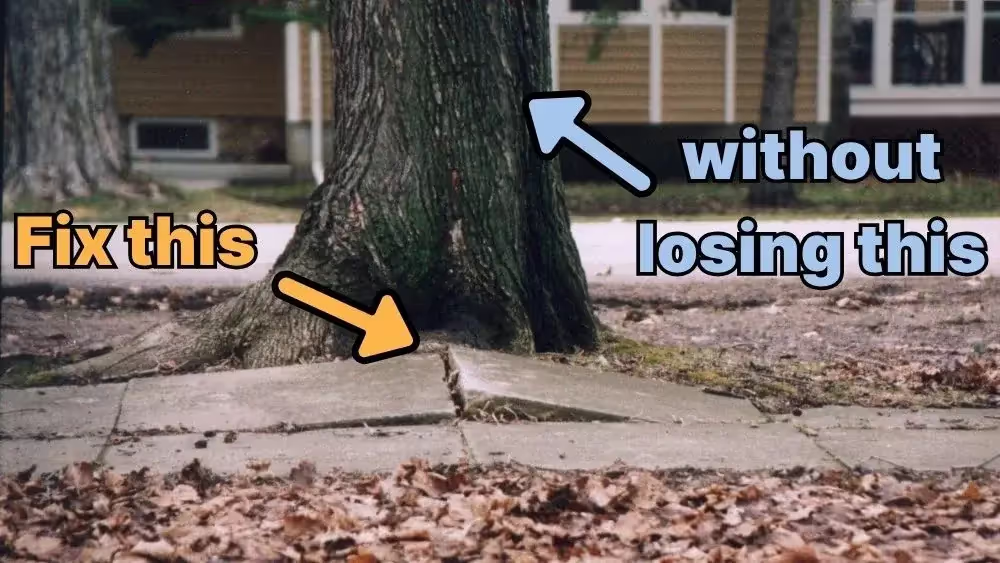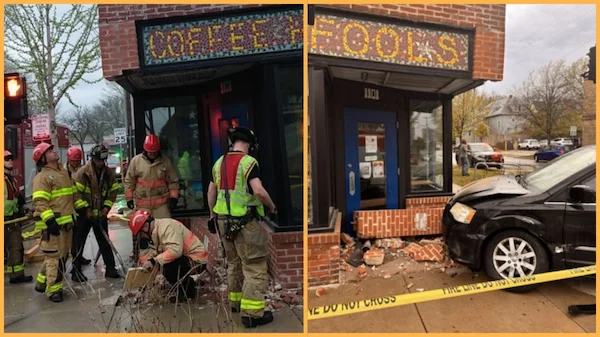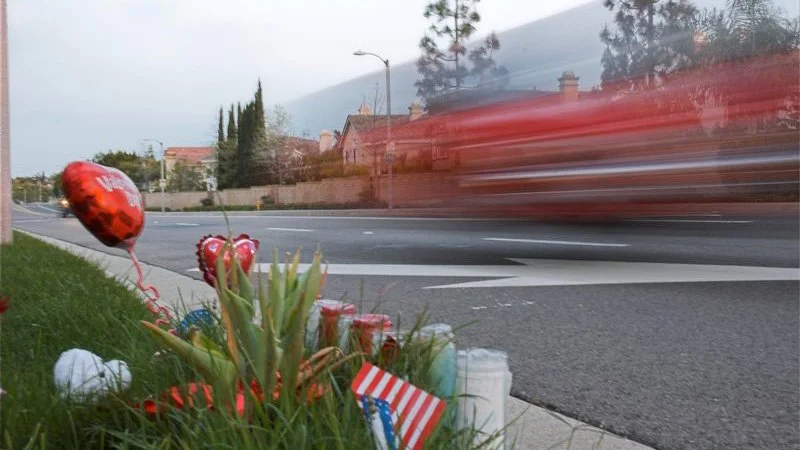Editor's Note: The challenges our cities face are growing, but so is the strength of this movement. Every story we share, every idea we spread, and every tool we build exists because people like you are committed to showing up. Your membership isn’t passive—it’s the momentum that makes change possible.
When State Representative (and Strong Towns member) June Speakman reached out to ask how her town might save dozens of mature street trees threatened by sidewalk repairs, she touched on a dilemma facing communities across North America. It’s a classic clash: roots lifting concrete panels, sidewalks becoming uneven, and a city’s instinct to “solve” the problem by removing the trees entirely.
But should we chop — or adapt?
The truth is, sidewalks and trees don’t have to be enemies. In fact, every great city and town in the world is full of great trees. They shade, shelter, and dignify our public realm. They’re a sign of maturity in the best sense, living infrastructure that increases in strength, value, and ecological benefit over time.
And in nearly every case, it’s not the tree that needs to go. It’s our assumptions.
What Can We Do Instead?
Here are six proven techniques that allow communities to preserve mature trees while restoring sidewalks to safe, walkable condition:
1. Reroute the Sidewalk (“Meander”)
Instead of going in a perfectly straight line, the sidewalk can curve slightly around the root zone. This is a low-cost, low-labor option that requires no root cutting and no demolition — just a little design flexibility. It also adds visual interest to a street and reminds drivers they’re in a pedestrian-friendly area.
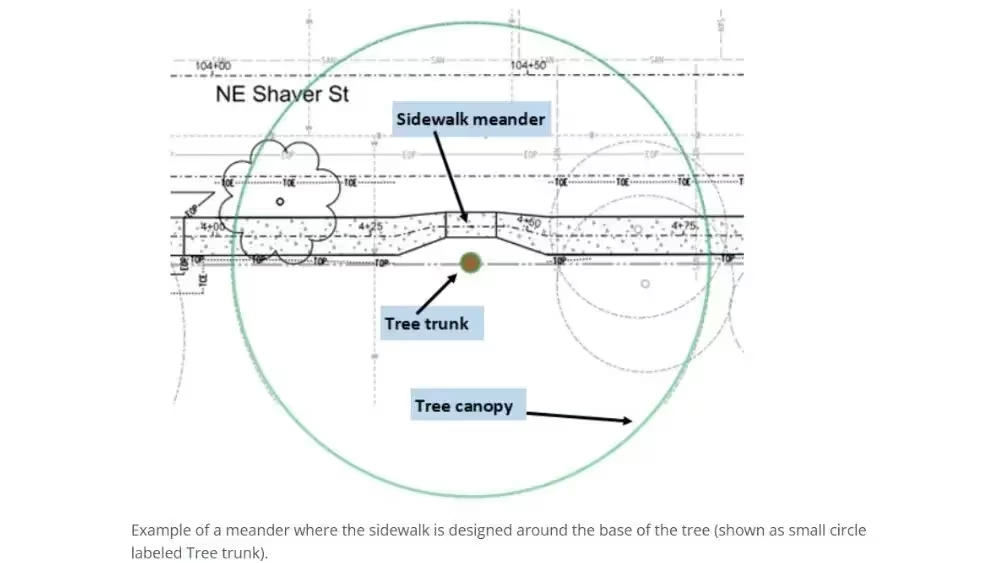
2. Install Permeable Pavers or Rubber Sidewalk Tiles
Rubber sidewalk tiles or pavers (like those used in some downtown revitalization projects) are flexible enough to adapt to growing roots. They’re easy to lift and reset if problems recur, and many are ADA-compliant. Their cost can often be less than full concrete removal and re-pour, especially when factoring in the preservation of costly tree infrastructure.
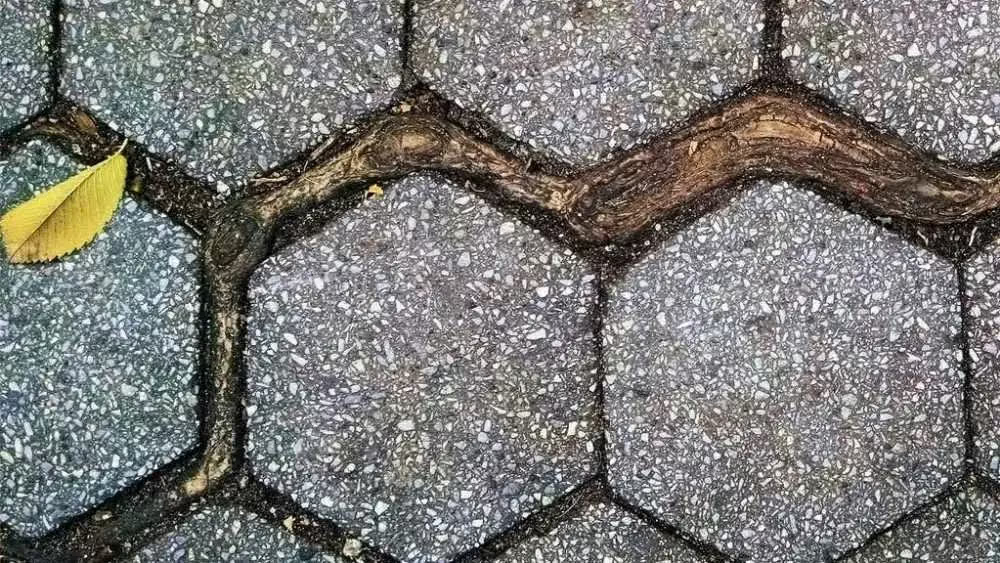
3. Elevate or Ramp Over Roots
A small section of the sidewalk can gently rise and fall over the root zone, like a speed table for feet. Think of it as a mini boardwalk or ramp. It may seem unconventional, but it’s increasingly popular in progressive public works departments and preserves the tree with minimal excavation.
4. Narrow the Sidewalk Slightly
In low-traffic zones, shaving a foot or two off the sidewalk width (while still meeting accessibility standards) can allow the path to steer clear of major roots. The key is case-by-case flexibility.
5. Root Pruning + Structural Soils
If root cutting must happen, do it with care. Professional arborists can remove roots strategically without compromising the tree’s structural integrity. Then, use root-friendly planting materials like structural soil to guide future growth downward.
6. Suspended Slab Sidewalks
In high-traffic areas or downtown cores, you can install a reinforced sidewalk slab that "floats" over the root zone, leaving space beneath for roots to grow. This solution is more expensive but appropriate in complex urban settings.
In many towns, the worst sidewalk damage is concentrated in just a few problem areas. Targeted upgrades can often solve the issue without invoking city-wide clear-cutting.
Why Saving Trees Is the Smart Move

It’s not just about beauty or sentiment. Trees provide real, measurable infrastructure benefits — especially for stormwater management, as highlighted in a recent analysis by Urban3 in Springfield, Missouri:
- A single mature tree intercepts 770 gallons of rainfall and absorbs 1,500 gallons of stormwater each year.
- Springfield’s full canopy absorbs 35 million gallons of stormwater annually, significantly easing pressure on storm drains.
- That absorption reduces stormwater system costs by up to $1.6 million/year.
- Each tree provides net annual benefits of $40 when comparing maintenance costs to ecosystem services. Multiply that across neighborhoods, and you’re looking at hundreds of thousands in public savings.
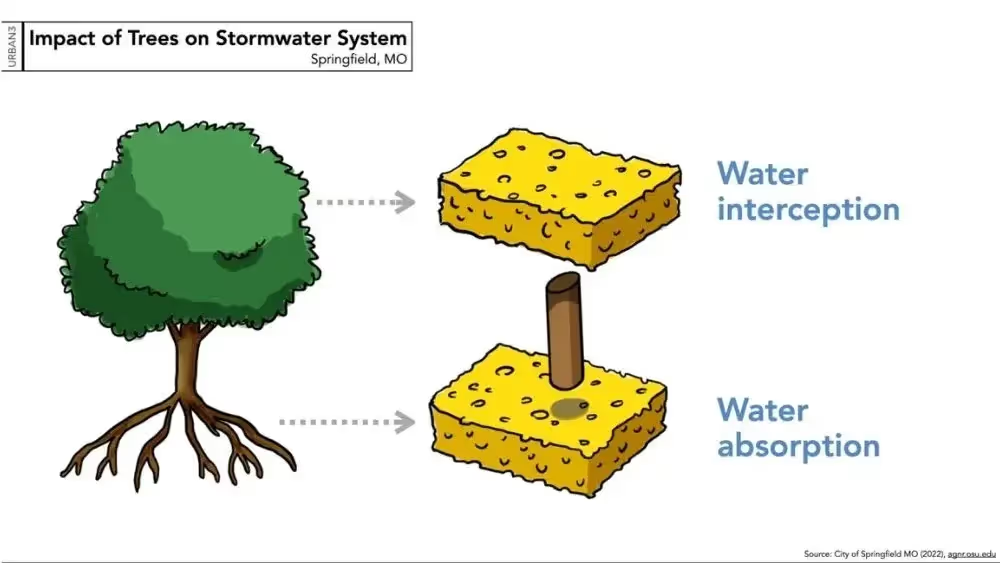
Trees can also make streets safer. Consider the image below. Both of these streets are marked as 20 mph zones, but only one is designed to slow drivers. The second one — with overhanging trees and sidewalk plantings — naturally cues motorists to slow down. Street trees, when pruned properly to avoid obstruction, aren’t just aesthetic — they’re traffic-calming devices that help keep kids, walkers, and cyclists safer.

Simply put, trees pay us back year after year. Cutting them down because a sidewalk panel is lifting is like demolishing a house to fix a leaky faucet.
A Note on Tree Relocation
There are cases where a tree must be removed, but that doesn’t mean it has to be destroyed. Trees of a certain size (generally under 10–12 inches in diameter) can often be relocated using a truck-mounted tree spade.
When a tree has to move, do it with care and ceremony. Consider marking its original location, celebrating its replanting, and even giving it a name. We’re creatures who value whimsy, memory, and continuity, so why not name the tree? Let it carry a story with it into its new home. The act of naming reinforces that this isn’t just landscaping — it’s a life that has been part of your community and continues to offer something back.
Schools, neighborhoods, and youth groups might even adopt or sponsor the rehomed tree, turning what could have been a loss into a celebration of civic creativity.
Strong Towns Prioritize Adaptation
Should we chop or adapt?
When it comes to trees and sidewalks, adaptation is almost always the wiser path. It preserves public value, protects environmental function, and affirms the idea that our public realm should work for everyone, including the living infrastructure that has served us so well for decades.
Mature trees are valuable assets. In fact, they’re the only infrastructure asset that increases in strength, value, and beauty as it ages. So let’s stop acting like they’re disposable.

